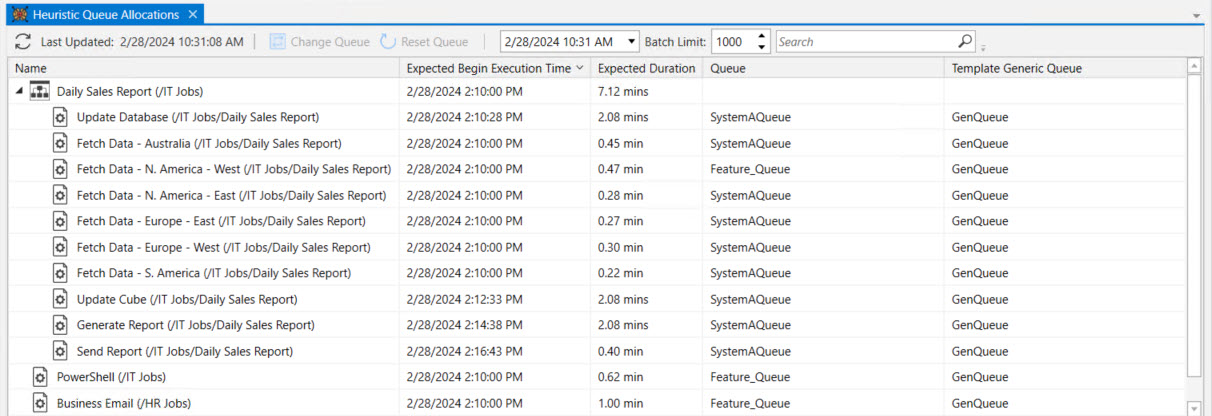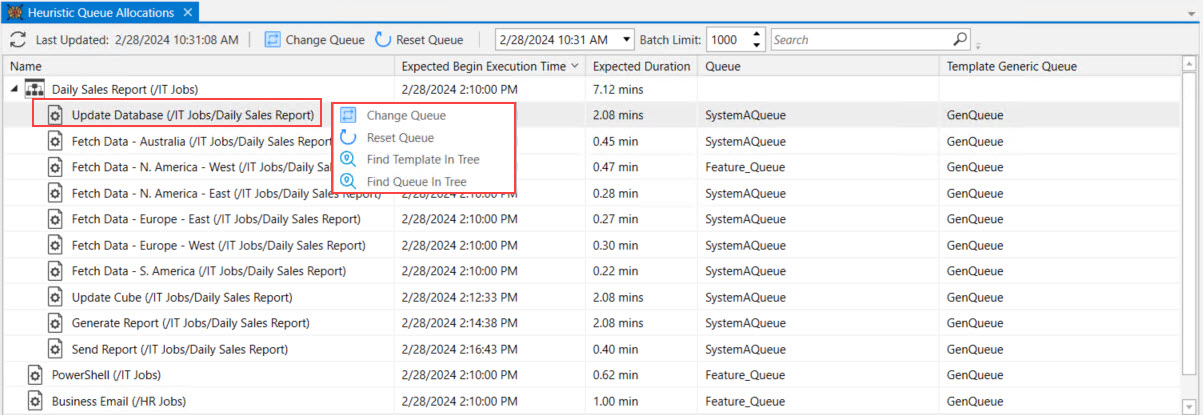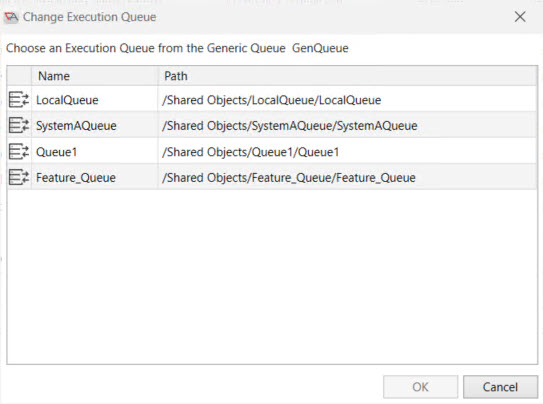Heuristic Queue Allocations
The Heuristic Queue Allocations view lists all scheduled Jobs, for the date selected, that are assigned to a that has the Heuristic Queue Allocation (HQA) property checked. When HQA is enabled, scheduled Jobs are pre-assigned to run on a system-selected (that is a member of the Job's associated Generic Queue) based on historical analysis and machine learning.
Note: Heuristic Queue Allocation is a checkbox property located on a Generic Queue's Properties sheet.
HQA allows scheduled workflows to be assigned from a Generic Queue to a set of Execution Machines that optimizes the use of the underlying machines and the relationship between the machine and the elapsed time of the specific Job within the workflow.

The view consists of five (5) columns: Name (Path), Expected Begin Execution, Expected Duration, Queue (Execution Queue assigned) and the Job template's Generic Queue assignment.
In the above image, the Jobs are assigned to a Generic Queue named GenQueue, as per the Template Generic Queue column. The Queue column is the system-selected Execution Queue each Job is set to run on.

The above figure for the HQA View shows a selected Job and the four (4) operations that are available (after right-clicking on the Job):
-
Change Queue - This operation allows you to change the pre-allocated Queue to one of your choice.
-
Reset Queue - This operation allows you to reset the Queue allocation back to what HQA had specified.
-
Find Template in Tree - This operation finds and selects the Job definition in the Object Navigation tree.
-
Find Queue in Tree - This operation finds and selects the Queue definition in the Object Navigation tree.
If the “Change Queue” operation is selected, a new dialog will be displayed with all the Execution Queue members of the Generic Queue, allowing you to select one to override the HQA computed one.
